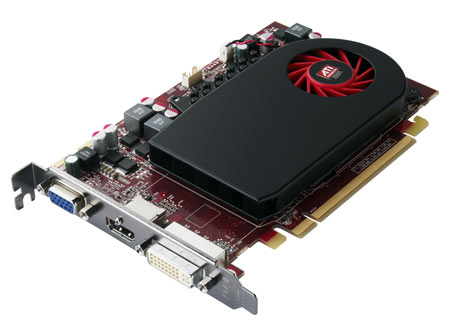ATI Radeon HD 5670: DirectX 11 For $99
Conclusion
It might be worth a retrospective to consider the Radeon HD 4770. It was April 2009 and the GeForce 8800 GT and Radeon HD 4830 were true champions of the ~$100 price point. Then, AMD introduced the Radeon HD 4770, a potential game-changer built on TSMC's efficient 40nm process. The card boasted similar hardware specifications compared to the Radeon HD 4830, yet with a 175 MHz higher core clock and performance that often approached its powerful Radeon HD 4850 predecessor. Originally intended to compete at the same $100 level, the Radeon HD 4770 had incredible potential.
Ultimately, this seemingly unbeatable card never lived up to its potential as the budget gamer's savior. This is due to three main factors: supply issues, rising prices, and falling Radeon HD 4850 prices. The problem with supply is often blamed on the early days of TSMC's 40nm process, rumored to have produced lower yields than expected (and affecting the 5000-series until only recently). Poor supply, of course, leads to higher prices, with the Radeon HD 4770 commonly being sold between $110 to $140 online, instead of its $100 target. But the real nail in the card's coffin was the Radeon HD 4850 falling to near-comparable prices. Soon after the 4770's introduction, the Radeon HD 4850 could be found cheaper--as low as $100--effectively making the Radeon HD 4770 redundant.
Why the history lesson? Well, if you can't learn from history, you're doomed to repeat it. No matter how good a graphics card is, it needs to be priced appropriately in order to provide desirable value.
In fact, we've learned a little from recent history. The GeForce GT 240 was released in November of last year and built on TSMC's same 40nm process. We saw it as an opportunity for Nvidia to compete with ATI's Radeon HD 4670, employing a cheaper-to-manufacture, low-power GPU. As it turns out, GeForce GT 240 pricing didn't drop to where it needed to go relative to the other cards out there. At more than $85 for the slower DDR3 version, cost remains far too high for a card competing with its faster GeForce 9800 GT relative.
It is this cutthroat ~$100 environment where the Radeon HD 5670 will be forced to sink or swim at $99. Here it will have to compete against the similarly-performing $80 GeForce 9600 GT, the slightly-faster $95 GeForce 9800 GT, the clearly-superior $110 Radeon HD 4770, and the vastly more attractive $110 Radeon HD 4850 / GeForce GTS 250. Purely from a performance standpoint, it would be madness to buy the Radeon HD 5670 instead of spending a couple dollars more for the Radeon HD 4850 or GeForce GTS 250. DirectX 11 isn't much of an issue here. From what we've seen so far in our DiRT 2 results, the performance hit is too large to bear for the new Radeon HD 5670. Granted this is only one DirectX 11 title, but it certainly sets the stage.
Aside from gaming, yes, there is value to be found in ATI's design. For the home theater PC enthusiasts, and for those craving Eyefinity for non-gaming (productivity) applications, the Radeon HD 5670 is a great deal. For folks who don't want to upgrade their power supply, the Radeon HD 5670 does offer the fastest reference card performance you'll find without connecting a dedicated power cable.
There are some other nagging issues about this situation, though. Why isn't there a Radeon HD 5650 that utilizes DDR3 and enables a lower price? AMD told us to wait for the upcoming Radeon HD 5400/5500 instead, but if the company is continuing its "cut in half" strategy and we get a 200 (or 240) stream processor card, it's not even going to be able to stand against the older Radeon HD 4650. We can hope the Radeon HD 5500 will be a DDR3 version of the 5670, but based on how the Radeon product lineup has been structured in the past, with cut-down lower-end models, that's probably not likely.
Get Tom's Hardware's best news and in-depth reviews, straight to your inbox.
Are we saying the Radeon HD 5670 is a bad card? Certainly not, it's a respectable mainstream offering. It just costs too much. At $80, this product would offer performance more in-line with its price tag. But at $100, that spread introduces too many strong competitors into the equation. We've seen products change to adapt to the market many times before. Maybe, if we're lucky, prices will quickly drop and allow the Radeon HD 5670 to be the game-changer it can be. At the $100 launch MSRP, however, a gamer is much better off investing a couple more dollars into a Radeon HD 4850 or GeForce GTS 250.
Don Woligroski was a former senior hardware editor for Tom's Hardware. He has covered a wide range of PC hardware topics, including CPUs, GPUs, system building, and emerging technologies.
